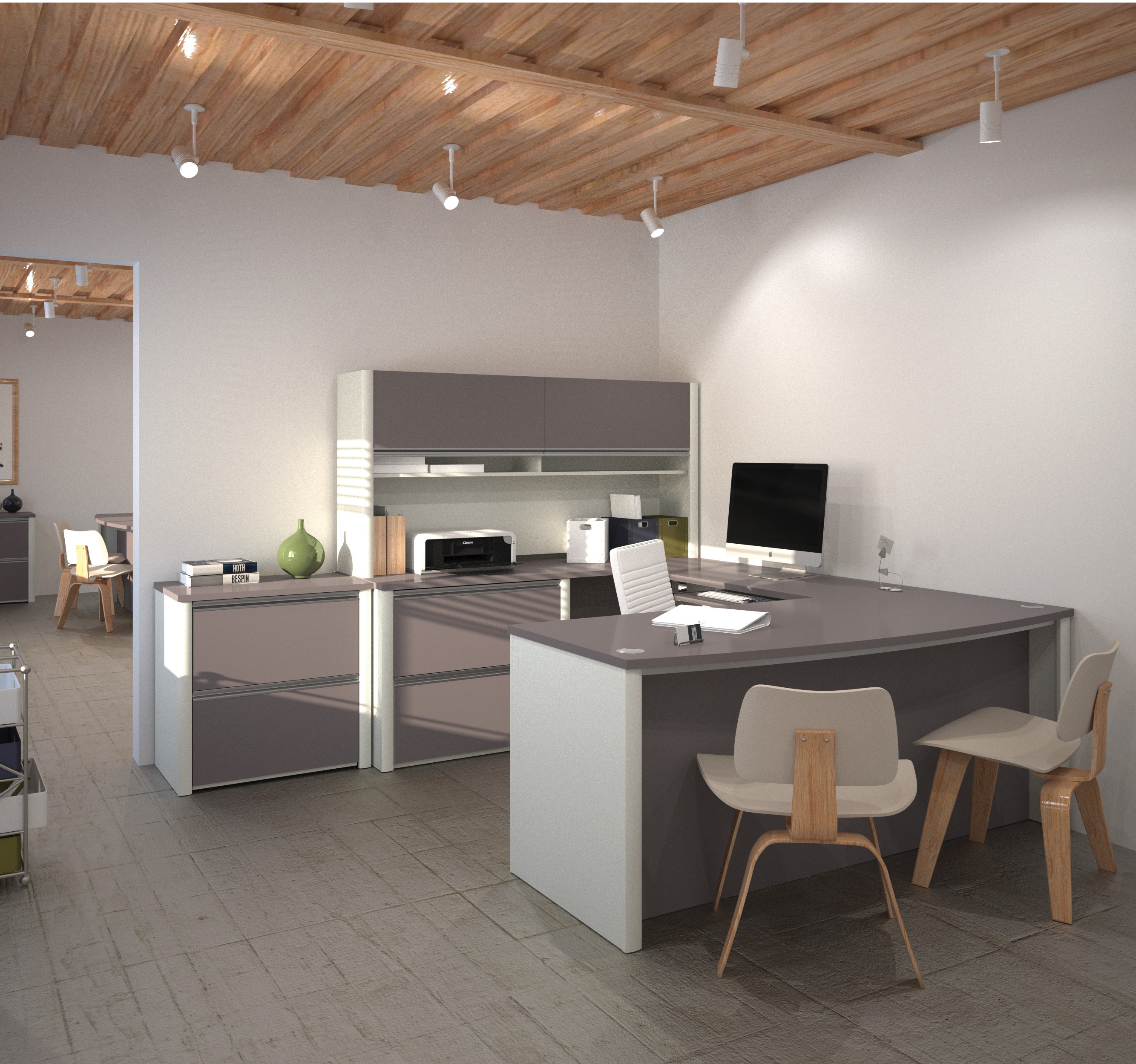Modern Office Aesthetics: Modern Office Design

Modern office design prioritizes aesthetics that enhance employee productivity and well-being. Key principles include minimalism, open spaces, and natural light, fostering a clean, spacious, and invigorating work environment.
Minimalism reduces clutter and distractions, allowing employees to focus on their tasks. Open spaces promote collaboration and communication, while natural light boosts mood and reduces eye strain.
Examples of Modern Office Designs
- Google’s Mountain View campus features open-plan workspaces, abundant natural light, and vibrant colors.
- Apple’s headquarters in Cupertino, California, showcases a sleek, minimalist design with floor-to-ceiling windows and clean lines.
- Amazon’s Seattle headquarters incorporates biophilic elements, such as indoor plants and natural materials, to create a calming and productive environment.
Benefits of a Modern Office Aesthetic
- Increased employee productivity due to reduced distractions and improved focus.
- Enhanced collaboration and communication fostered by open spaces and natural light.
- Improved employee well-being through reduced eye strain, increased mood, and a more comfortable work environment.
Technology Integration in Modern Offices

Technology has become an integral part of modern office design, transforming the way we work and collaborate. From smart desks to video conferencing systems and cloud-based collaboration tools, technology is seamlessly integrated into office spaces to enhance productivity, efficiency, and employee well-being.
Smart desks, for instance, allow employees to adjust their workstations to their preferred height and position, promoting ergonomic comfort and reducing the risk of musculoskeletal disorders. Video conferencing systems enable real-time communication and collaboration with colleagues and clients regardless of their physical location, fostering seamless communication and remote work possibilities.
Advantages of Technology Integration
- Enhanced productivity and efficiency
- Improved communication and collaboration
- Increased employee satisfaction and well-being
- Reduced costs and environmental impact
Challenges of Technology Integration
- Security concerns
- Employee training and adoption
- Potential for distraction and overload
- Maintenance and technical support
Case Studies
Numerous companies have successfully implemented technology solutions in their offices, reaping significant benefits. For example, Google’s “smart” office in London features motion-activated lighting, temperature control, and desks that can adjust to individual preferences. The result is a highly personalized and productive work environment that has been shown to improve employee satisfaction and productivity.
Another example is Microsoft’s “modern workplace” initiative, which focuses on providing employees with the tools and technologies they need to work flexibly and collaboratively. The company has implemented cloud-based collaboration tools, video conferencing systems, and mobile-first applications that enable employees to work from anywhere, at any time.
Sustainable and Ergonomic Considerations

Modern office design prioritizes sustainability and ergonomics to promote employee well-being and environmental consciousness.
Sustainability in Office Design, Modern office design
Sustainable office design involves using eco-friendly materials, implementing energy-efficient practices, and reducing waste.
- Eco-friendly Materials: Using recycled or sustainable materials like bamboo, cork, and low-VOC paints minimizes environmental impact.
- Energy Efficiency: Installing energy-efficient lighting, appliances, and HVAC systems reduces energy consumption.
- Waste Reduction: Encouraging recycling, using reusable items, and optimizing printing practices minimizes waste.
Ergonomics in Office Furniture
Ergonomics focuses on designing furniture and workstations that support employee health and comfort.
- Adjustable Furniture: Adjustable desks, chairs, and monitors allow employees to customize their workstations for optimal posture.
- Lumbar Support: Chairs with built-in lumbar support reduce back pain and promote proper posture.
- Anti-fatigue Mats: Standing desks and anti-fatigue mats minimize discomfort from prolonged standing or sitting.
Examples of Sustainable and Ergonomic Offices
Companies like Google, Microsoft, and Patagonia have implemented sustainable and ergonomic office designs:
- Google’s Bay View Campus: Features sustainable materials, energy-efficient systems, and outdoor workspaces.
- Microsoft’s Redmond Campus: Boasts adjustable desks, ergonomic chairs, and natural light to enhance employee well-being.
- Patagonia’s Ventura Headquarters: Prioritizes natural ventilation, energy conservation, and employee access to nature.